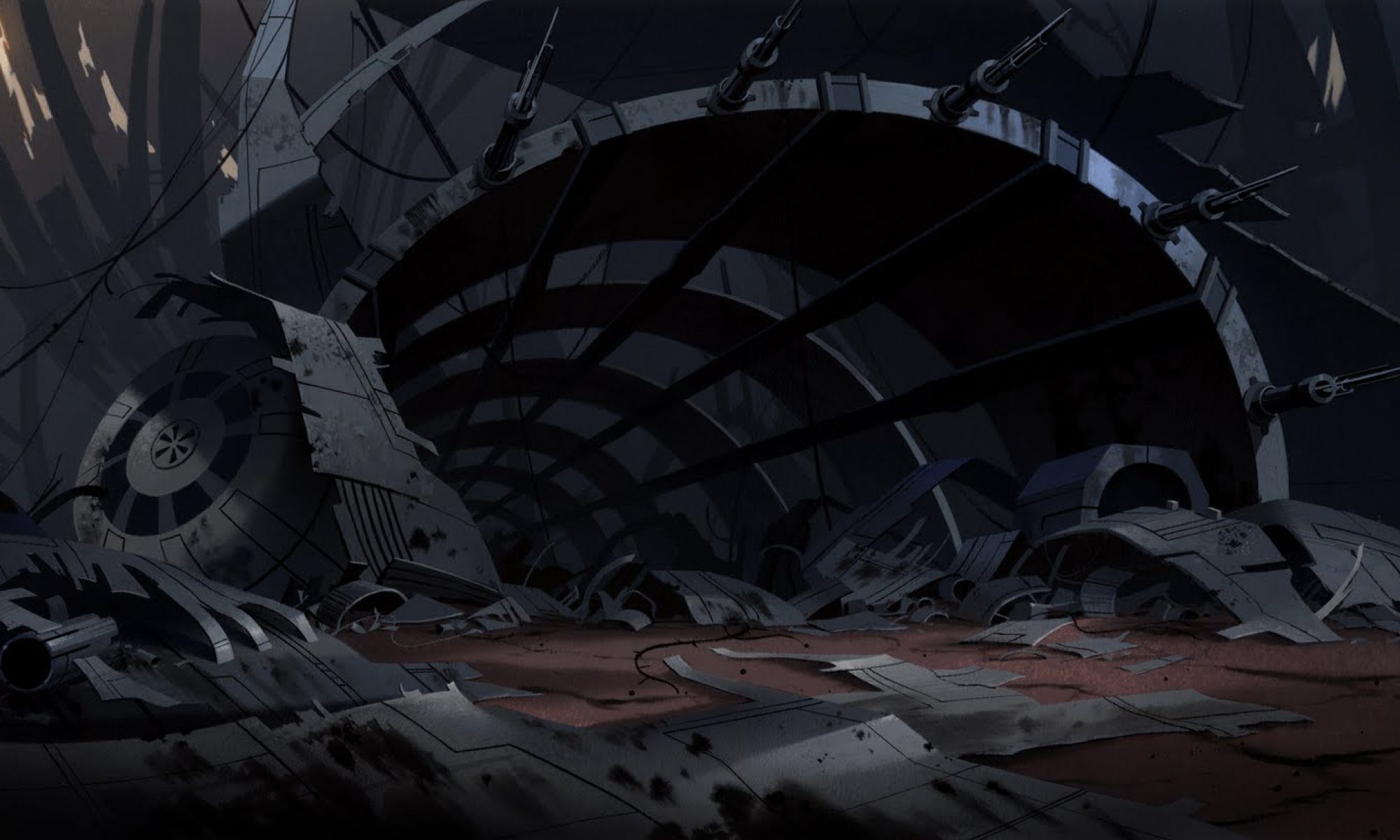It is spring. The broken and scattered remnants of the main street lie unmoving, splayed across the previously bustling road. The hollow remains of the now empty and decrepit shops sit still staring through their broken and darkened windows. The few lifeless, frost ridden trees still lining the road, left undisturbed by all but the biting wind and coming and going of the sun, sway and shudder, their twisted limbs reaching out for any scrap of precious sunlight.
Listen. The breeze, moving slowly and without reason through the skeletons of the ravaged skyscrapers, forms a discord choir of wails and groans resonating through the empty streets of the city. The smell of smoke hangs low in the air, choking the last of the concrete and rebar goliaths who once ruled this place. An American flag hangs unmoving from the side of an empty storefront, representative of what was once a beautiful and lively country, now a relic of an era gone by. It tries desperately to hold onto the dwindling shreds of its past, its reds and blues standing out from its monochrome and desolate surroundings. Cars in their hundreds litter the streets, most lost and abandoned by owners long gone, some home to the bare skeletal remains, the memories, of the people who used to live out their lives inside of this concrete jungle.
It is dawn. The sun watches over the bleached and war-ravaged sky, dissipating the darkness and shining through the cover of thick fog blanketing the city streets. The sounds of the receding darkness reverberate throughout the empty metropolis, bouncing around off the walls of the deserted superstructures. With no ozone layer left the sun and its rays, now a harbinger of death searches relentlessly for any signs of life but to no avail. Cold and damp, the tunnels under the city play host to a small number of lone survivors living their lives in hiding, fearful of the dangers above. Away from the harsh, white sunlight, amongst the thick inky blackness of the winding maze of the abandoned subway, a single light probes cautiously into the void accompanied by the heavy thud of a pair of boots. The dim light skips freely around on the moss-covered walls, eventually disappearing into the darkness ahead. Seemingly alone, the footsteps tread further, deeper, into the labyrinth.
Stare, paranoid into the gloom. There is no one else down here. The withering and decay of the subway walls show you that. The crumbling brick arch overhead and the rusted iron rails beneath your well-worn boots are barely visible by torchlight. Feel the cold, biting and clawing through the torn overcoat draped across your back, raising the hairs on your neck. The sound of your everpresent footfalls, echoing off the sides of the tunnel, calls for you to instinctively look over your shoulder and to keep on moving. You tread unwillingly into the unknown ahead for fear of what may be following behind. Feeling the tight grasp of the concrete tubes you call home, thoughts of the world above, grey, bleak and deserted cross your mind coming to rest on a pipe dream of meadows and rolling hills full of life and prosperity.

Hey Owen,
Whoo-hoo! Good start with the personification. There are some great moments in this piece!
Look to vary your syntax a little more. Remember the power of length- short and simple to build tension and suspense, longer and complex to connect aspects of the scene and ‘draw’ things out. Also, think about the manner in which you are beginning your sentences. At the moment, you are opening with the subject a lot. Look to use a range of structures here (verbs, adverbs, prepositions).
You are following the structure nicely. Ensure that you ‘show’ your scene as best you can by describing the way things sound, look, feel and smell. Again, you do this in places but more consistency is required.
Mrs. P
Hi Owen,
You have some strong passages of imagery in this piece. Well done!
In your final assessment hours, I encourage you to:
Look to be consistent with the mood you are developing. In places, it lapses and the ‘bleak’, ‘desolate’ atmosphere is gone. Be sure to imply this through your vocabulary choices and use of figurative devices.
At times, you are “telling” the reader the details of your scene which interrupts the flow of the other imagery you are creating. Look to address these areas. Reading your work out loud to yourself might help you to work on this.
Remember to finish your piece with the paragraph that drops your reader into the scene through the use of the pronoun “you”.
Mrs. P